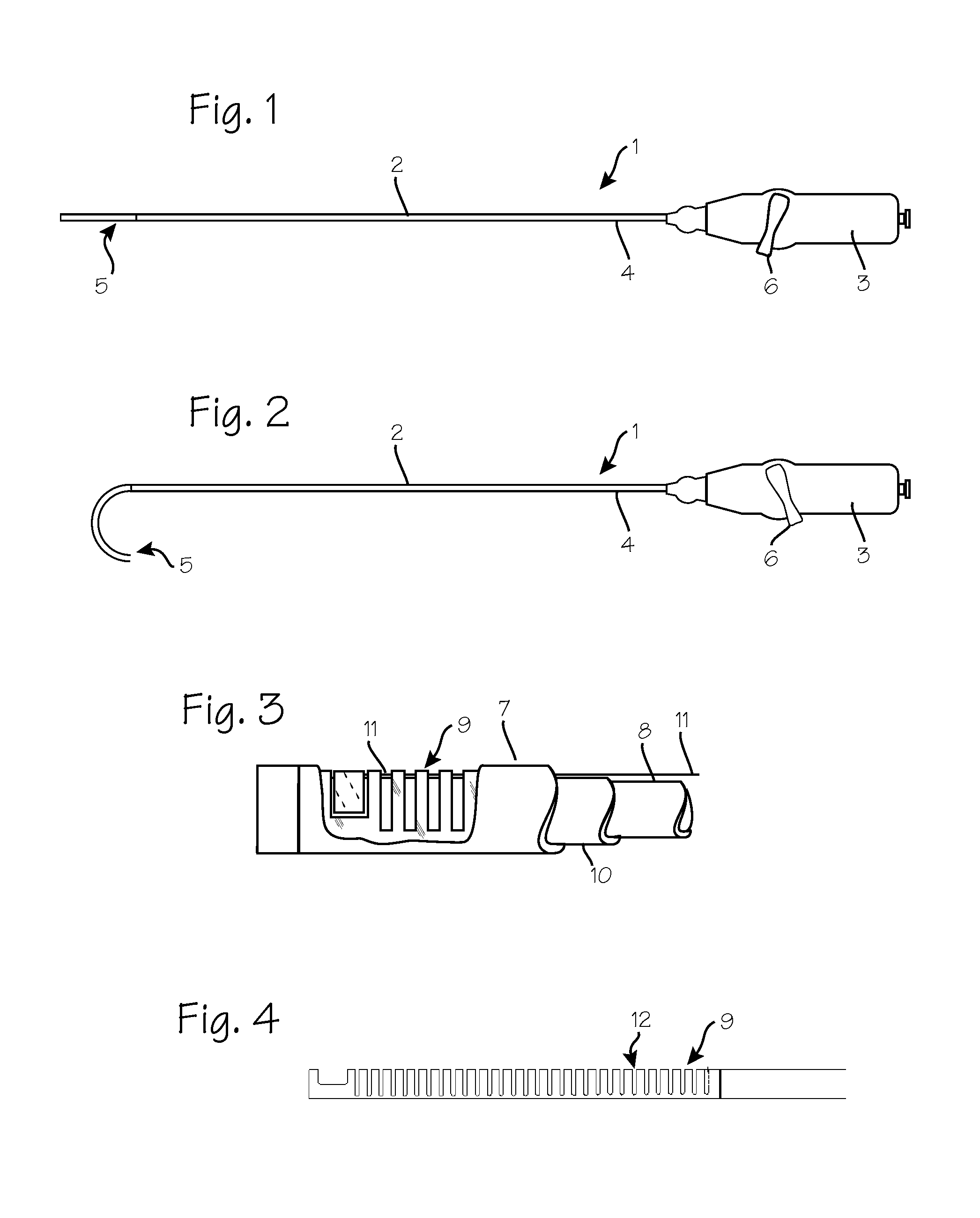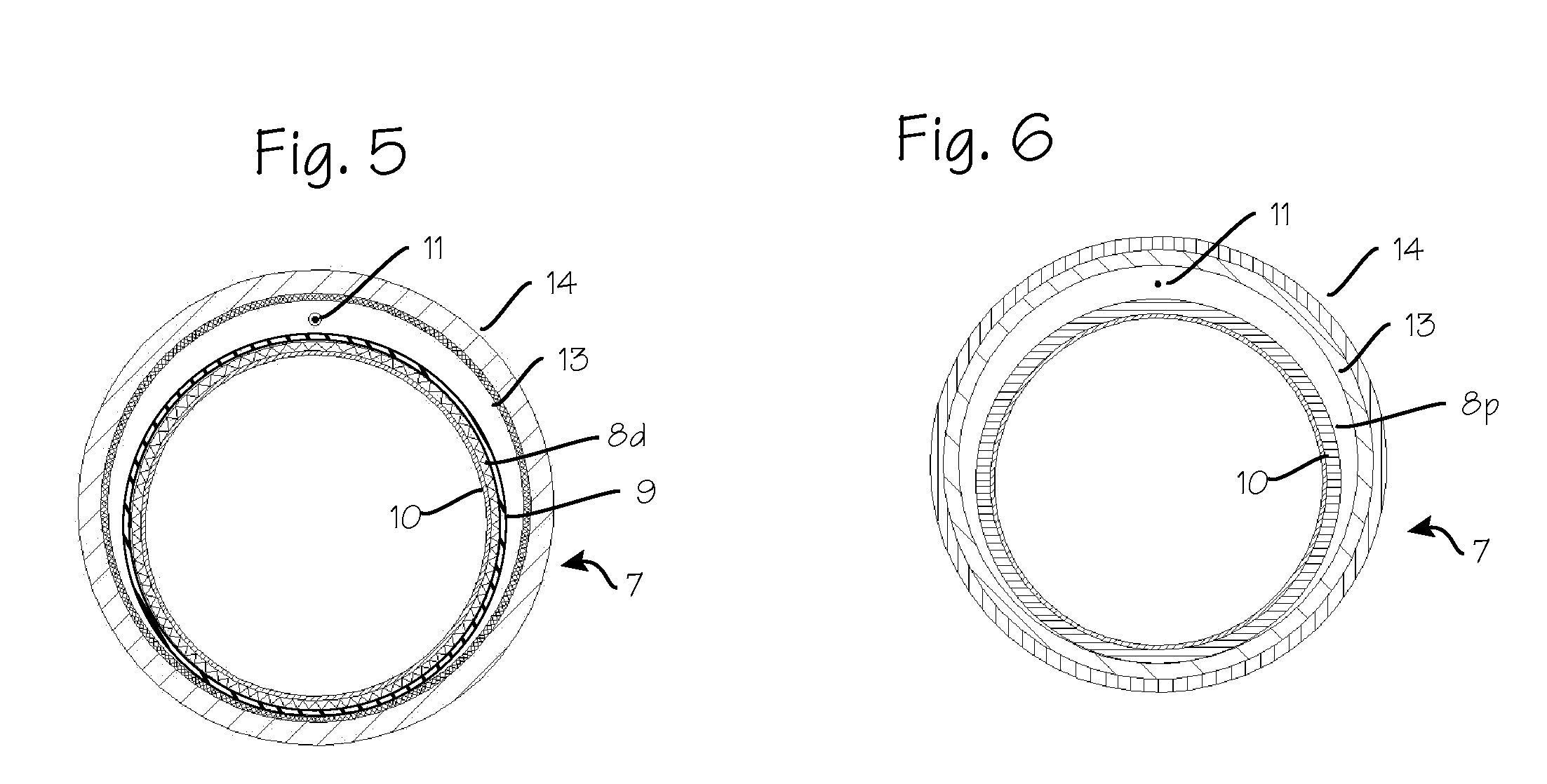Steerable Guide Catheters and Methods For Their Use
a technology of which is applied in the field of steerable guide catheters and sheaths, can solve the problems of reducing the ability of guide guides, limiting the curvature of pre-shaped guides, and limiting the range of achievable shapes, so as to optimize the shape and steerability of catheters, optimize the torque transfer and push ability, and optimize the effect of catheter shape and steerability
- Summary
- Abstract
- Description
- Claims
- Application Information
AI Technical Summary
Benefits of technology
Problems solved by technology
Method used
Image
Examples
Embodiment Construction
[0035]FIG. 1 illustrates the deflectable guide catheter with the tip in its straight configuration. The guide catheter 1 comprises a steerable guide catheter tube 2 with a catheter handle 3 mounted on the proximal end 4 of the guide catheter tube. The distal end of the guide catheter tube includes a deflectable segment 5 which is operated by a pullwire via manipulation of a steering lever 6 on the proximal handle. As illustrated in FIG. 2, the deflectable segment is bent in an arc as the steering lever turned by the operator.
[0036]FIG. 3 is a cutaway view of the distal end of the deflectable guide in FIG. 1. As shown in FIG. 3, the deflectable segment of the guide catheter tube 2 is comprised of an outer catheter shaft 7 and a catheter inner tube 8, with a deflection tube 9 sandwiched between the two. A PTFE liner 10 is disposed with in the catheter inner tube 8. That portion of the catheter inner tube 8 which resides inside the deflection tube (item 8d) comprises a coil covered wit...
PUM
 Login to View More
Login to View More Abstract
Description
Claims
Application Information
 Login to View More
Login to View More - R&D
- Intellectual Property
- Life Sciences
- Materials
- Tech Scout
- Unparalleled Data Quality
- Higher Quality Content
- 60% Fewer Hallucinations
Browse by: Latest US Patents, China's latest patents, Technical Efficacy Thesaurus, Application Domain, Technology Topic, Popular Technical Reports.
© 2025 PatSnap. All rights reserved.Legal|Privacy policy|Modern Slavery Act Transparency Statement|Sitemap|About US| Contact US: help@patsnap.com



